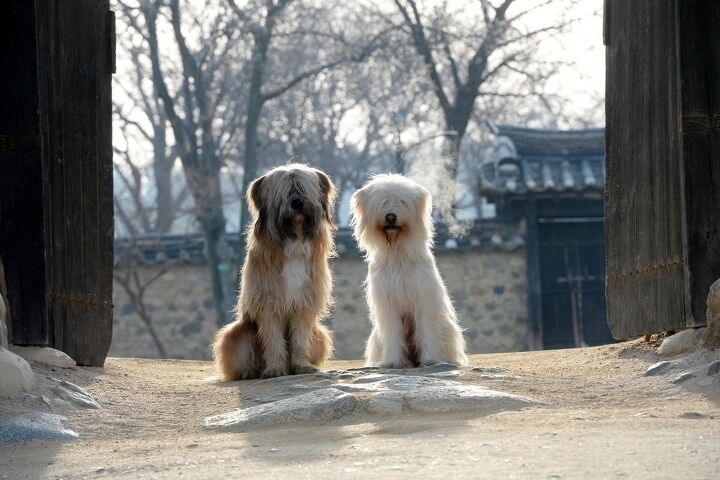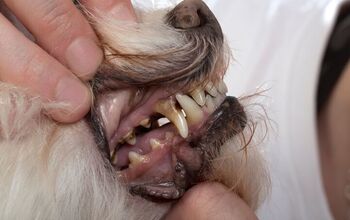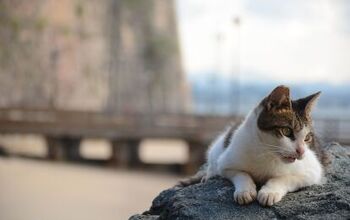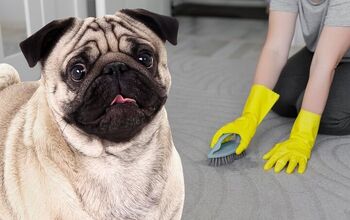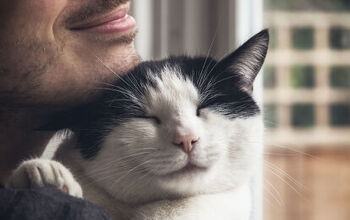Sapsali


About Sapsali
The Sapsali (also known as the Sapsaree), is native Korean dog. This dog has a long, shaggy coat with hair that falls over its eyes, not unlike the Old English Sheepdog. Despite its physical similarities to various sheepdog breeds, the Sapsali is a breed entirely of its own that has been raised and kept in Korea for hundreds of years.
The Sapsali (also known as the Sapsaree), is native Korean dog.
The exact origins of the Sapsali breed are unknown but early documentation suggests that the breed was present in Korea as early as the Three Kingdom period which lasted from 37BC to 668AD. The Sapsali was a cherished companion among royal Korean families for many years, believed to be an instrument of good fortune. In fact, the meaning of Sapsaree is “One that roots out evil spirits.” That explains their nickname of “Ghost Dog.” A popular saying states that the Sapsarees drive away ghosts because ghosts are deathly afraid of it. After the Silla Unification period in Korea the popularity of the breed spread to the upper class. During the Koryo and Chosun Dynasties, the breed became more common among average Korean citizens but the breed nearly went extinct around the time of the first World War and the Korean War that followed. A group of professors from the Kyungpook National University sought to revive the breed during the 1960s, though the Sapsali wasn’t truly out of the woods until the 1980s. Today the Sapsali is considered a national treasure of Korea, though it is still largely unknown outside of the country.
The Sapsali is an old breed, having existed in Korea as early as 37BC. The exact origins of the breed are unknown, however, and little is known regarding the development and pedigree for this breed.
The meaning of Sapsali is “One that roots out evil spirits.”
The Sapsali is a medium-sized dog and should be offered a dog food diet formulated for dogs of its size. If your Sapsaree is active, you might even want to consider an active or working breed formula.
The Sapsali is a loyal and protective breed that develops strong bonds with its master. This breed is also smart which means that it is likely to respond well to training. Positive reinforcement training is recommended and praise is an especially strong motivator for this breed. To prevent the breed from developing problem behaviors you should start training early and make sure that the dog gets plenty of exercise and mental stimulation on a daily basis.
The Sapsali is a medium-sized breed with males standing between 20 and 23 inches tall, weighing 40 to 62 pounds at maturity. Females of the breed grow up to 22 inches tall and typically weigh between 35 and 55 pounds.
The Sapsali is generally a friendly breed, though it can be a little wary around strangers. This breed looks to its owner for guidance and will be ready to accept strangers as friends once its master is shown to be comfortable around the stranger. The breed is loyal and devoted to its family and it can be a little bit protective, using its full, rich bark to ward off potential intruders. Although the breed can be protective it generally gets along well with children and can make a great family dog. Early socialization is required, however, to prevent the development of problem behaviors and aggressive tendencies. This breed is rarely aggressive toward people but may not get along with other dogs.
The Sapsali is generally regarded to be a healthy breed though little is known about its pedigree. Because the breed was saved from extinction by breeding together a small group of dogs, inherited conditions like congenital heart defects, hip dysplasia, and other health problems may be an issue. Some of the other conditions to which this breed is prone include entropion, bloat, allergies, skin problems, and heart disease.
The average life expectancy for the Sapsali is estimated to be between 10 and 12 years.
The Sapsali has medium energy requirements that can generally be satisfied with a long daily walk or a brisk jog. The Sapsaree was not developed as a working breed but it has been known to be very playful and energetic among family.
The Sapsali is a loyal and protective breed that develops strong bonds with its master.
The Sapsali is not currently recognized by any of the major kennel clubs in the West, though supporters of the breed continue to strive for recognition. The breed is recognized by the Federation Cynologique Internationale (FCI) as well as the Korean Kennel Club.
The distinguishing characteristic of the Sapsali breed is its long shaggy coat. These dogs come in all colors and patterns including various combinations of black, gold, red, brown, and gray. The Sapsaree typically has long hair that falls over its eyes, much like the Old English Sheepdog. Because this breed has such a long coat, regular brushing and grooming is required to keep shedding to a minimum and to preserve the health of the coat. Some dogs exhibit curly or wavy coats while others have straight hair – it is largely a matter of breeding.
The average litter size for the Sapsali is 4 to 7 puppies. As is true for all breeds, it is recommended that you start the Sapsali with training and socialization as early as possible. This will help to prevent the development of problem behavior and will ensure that your Sapsali becomes a well-adjusted adult.
Photo credit: ufokim/Shutterstock; pranav_ritvik/Shutterstock

Kate Barrington is the loving owner of two cats (Bagel and Munchkin) and a noisy herd of guinea pigs. Having grown up with golden retrievers, Kate has a great deal of experience with dogs but labels herself a lover of all pets. Having received a Bachelor's degree in English, Kate has combined her love for pets and her passion for writing to create her own freelance writing business, specializing in the pet niche.
More by Kate Barrington



